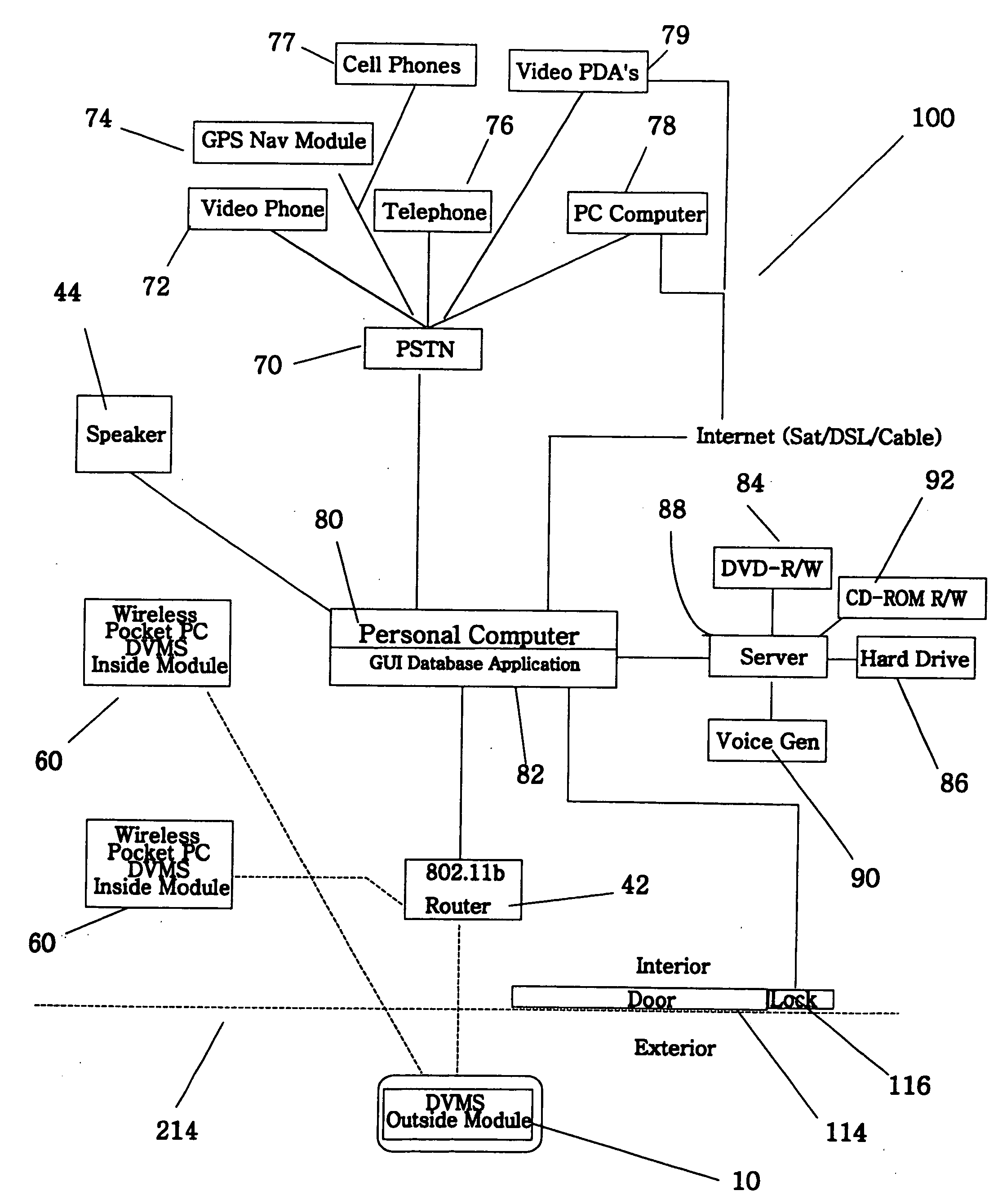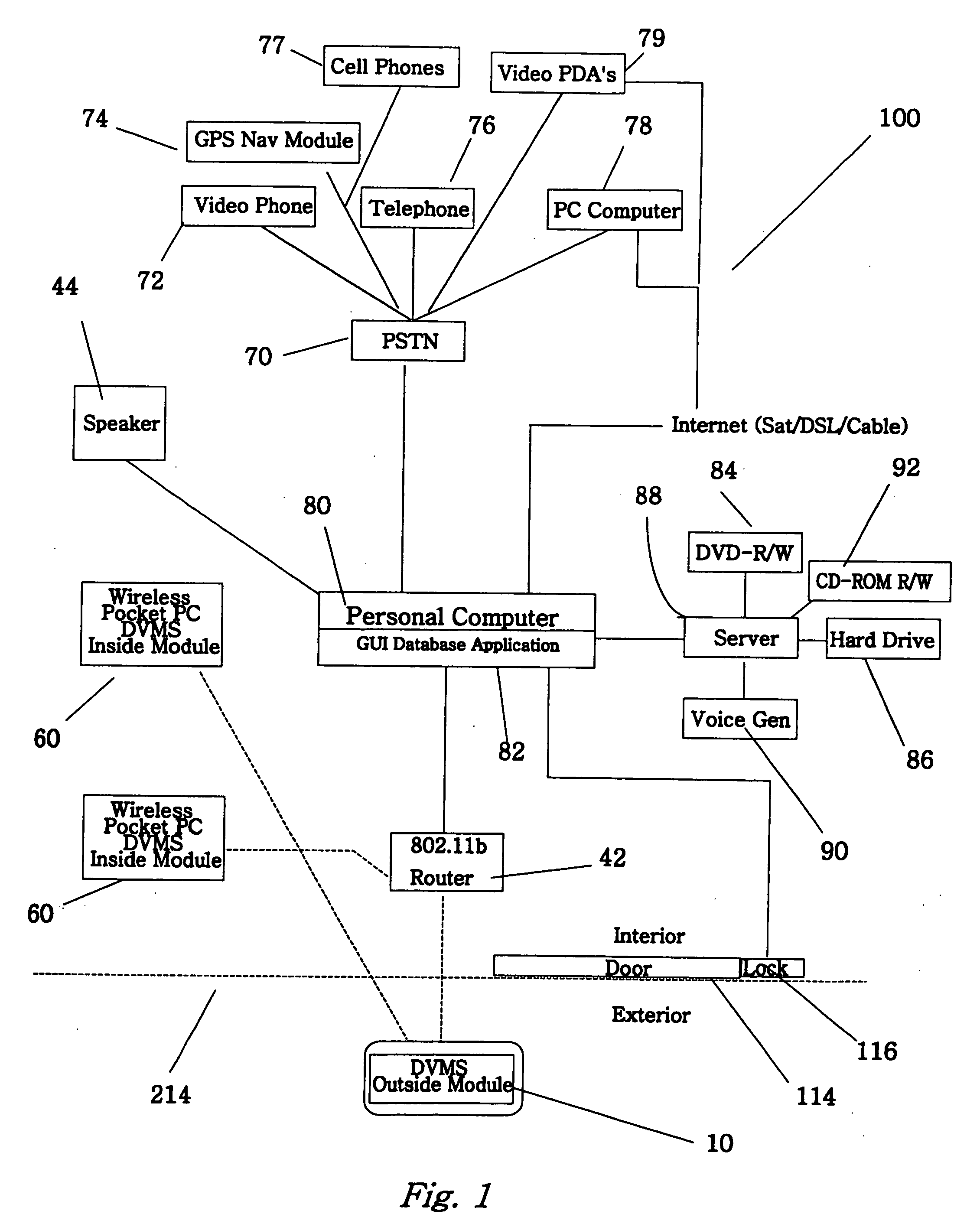Automated audio video messaging and answering system
an answering system and audio video technology, applied in the field of automatic audio video messaging and answering system, can solve the problems of occupants presenting certain security risks, no means to ensure that unwanted access is not obtained, and inconvenient situations, so as to achieve the effect of improving communication
- Summary
- Abstract
- Description
- Claims
- Application Information
AI Technical Summary
Benefits of technology
Problems solved by technology
Method used
Image
Examples
Embodiment Construction
[0043] The major components of the audio-video communication and answering system 100 are schematically shown in FIG. 1. The exterior of a premises is differentiated from the interior by a demarcation line 214, which represents a wall or other similar structure. The wall 214 has a door 114 and an electronically actuated lock 116. On the exterior is a DVMS outside module 10, which is a wireless pocket PC using the Microsoft Windows® Mobile (802.11b standard) operating system that is in communication with a wireless RF router 42 that is located in the interior. The DVMS outside module 10 has a video camera, a means for proximity sensing, and the conventional components that are now standard with a wireless pocket PC. The means for proximity sensing can be a dedicated proximity sensor or a video software application that analyzes the image for movement. The wireless router 42 is connected to the Internet via DSL, cable, satellite, or through a wireless network. It is anticipated that t...
PUM
 Login to View More
Login to View More Abstract
Description
Claims
Application Information
 Login to View More
Login to View More - R&D
- Intellectual Property
- Life Sciences
- Materials
- Tech Scout
- Unparalleled Data Quality
- Higher Quality Content
- 60% Fewer Hallucinations
Browse by: Latest US Patents, China's latest patents, Technical Efficacy Thesaurus, Application Domain, Technology Topic, Popular Technical Reports.
© 2025 PatSnap. All rights reserved.Legal|Privacy policy|Modern Slavery Act Transparency Statement|Sitemap|About US| Contact US: help@patsnap.com



